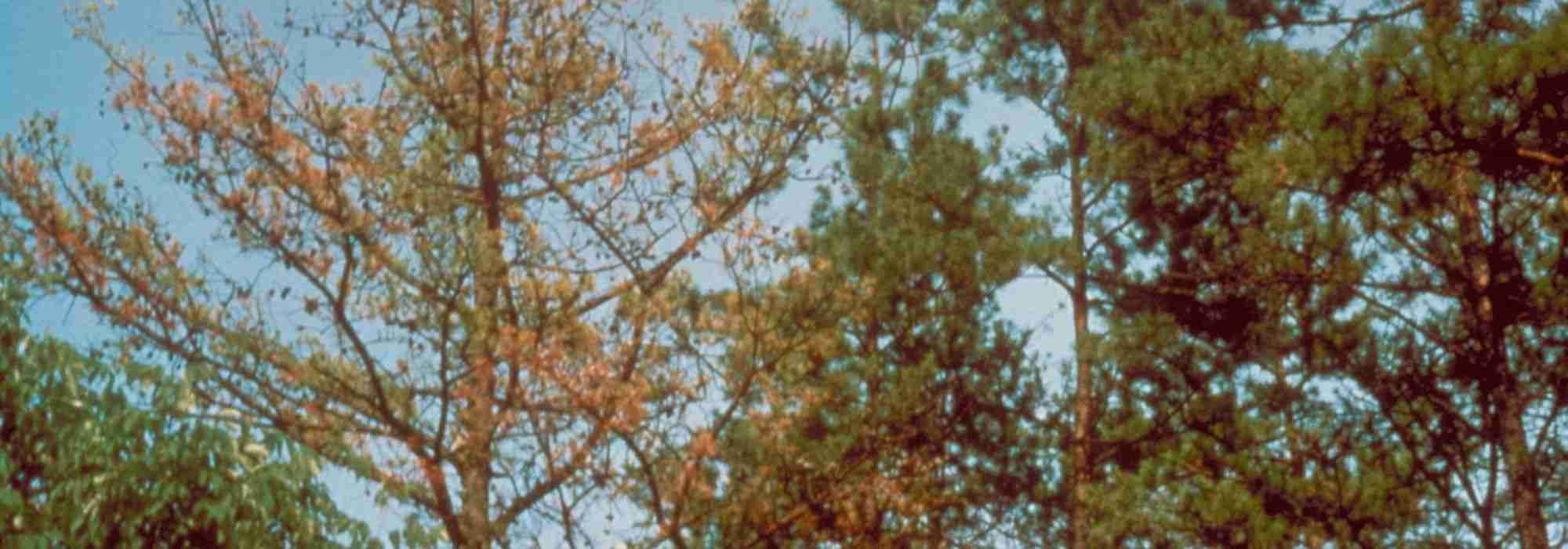
Phytophtora : identify, prevent, control
Tips and treatments
Contents
The term Phytophthora refers to a group of diseases, including some mildews (cactus mildew, strawberry mildew, tomato mildew, pepper mildew…), which cause stem, trunk and root rot of various types of woody or herbaceous plants. Most of these soil-dwelling pseudo-fungi (division Oomycetes) are not specific to a single plant type. Their presence in gardens on woody plants is often due to nursery contamination of container-grown stock followed by favourable conditions such as an excess of soil or air moisture for mildews.
Root pathogens Phytophthora cinnamomi and Phytophthora ramorum cause the greatest damage in ornamental and forestry cultivation, while Phytophthora infestans is responsible for tomato and potato mildews in vegetable gardens. To date, around a hundred Phytophthora species have been identified, but the genus probably comprises several hundred.
Which species are susceptible to Phytophthora?
The name “Phytophthora” is formed from two Greek words phtora, “destruction” and phyton “plant”, which says much about its effects.
Most Phytophthora species are fairly polyphagous and can therefore infect several types of plants. They are however often confined to a single medium such as :
- the forest medium for Phytophthora ramorum on Larch, Chestnut, Beech …,
- ornamental garden bushes for Phytophthora cinnamomi on Conifers, Rhododendron, Viburnum, Pieris, Peony…,
- the vegetable garden for Phytophthora infestans on Tomato and Potato, Phytophthora capsici on Pepper …,
- the soft fruit orchard (Hazel, Raspberry, Strawberry…)
Phytophthora cinnamomi – dieback of conifers and Ericaceae
Phytophthora cinnamomi is most common species in gardens and attacks especially Ericaceae (Rhododendron, heathers Calluna, Azalea, Pieris, Bilberry, Sea-buckthorn…) as well as Conifers such as Yew (Taxus baccata) and False-cypress (Chamaecyparis). This parasitic organism enters through wounds at the collar or via superficial roots of the plant and then develops both in roots and stems. Its persistence in soil and in diseased plants favours its dissemination by irrigation or rain water and by humans (dirty boots, tools not disinfected, sale of contaminated young plants…).
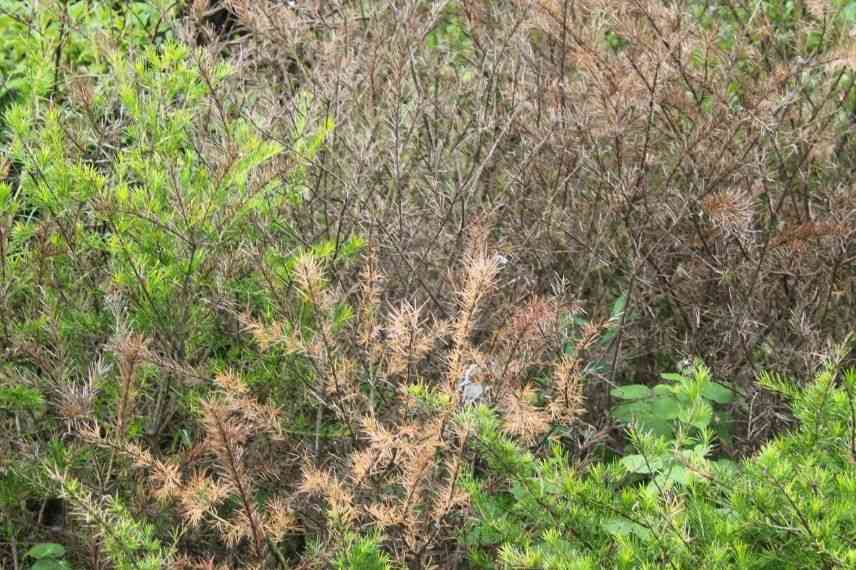
Phytophthora cinnamomi on a Grevillea
Phytophthora ramorum
Capable of infecting more than 120 species, this Phytophthora is most feared in forest. Detected in 2002 for first time in France in nurseries in Brittany and Pays-de-la-Loire on rhododendron and viburnum, it appeared in 2007 in forest understorey in Brittany and Normandy. There are for this fungus foliar hosts such as Rhododendron ponticum, bilberry (in the UK) and many ornamental plants. These hosts are sensitive to disease but do not die from it. However they allow the fungus to spread by causing heavy sporulation dispersed by wind and rain which wreaks havoc on so-called “terminal” hosts such as Red oak (Quercus rubra), Beech, Horse-chestnut or Japanese larch (Larch is both foliar and terminal host and experienced significant decline in 2009 in Great Britain. A stand in Finistère revealed presence of the disease in 2017). Among European hosts of Phytophthora ramorum identified are Rhododendron, Viburnum, Maple, Horse-chestnut, Birch, Hazel, Ash, Holly, Goat willow, Bird cherry, Lawson cypress, Fir (Abies), Larch, Sitka spruce, Douglas fir…
Phytophthora infestans
Responsible for potato and tomato late blight, this Phytophthora species caused the great famine of the 1840s in Ireland where potato was staple food. It can contaminate aerial organs directly when drops of water splashed from contaminated soil carry infectious particles.
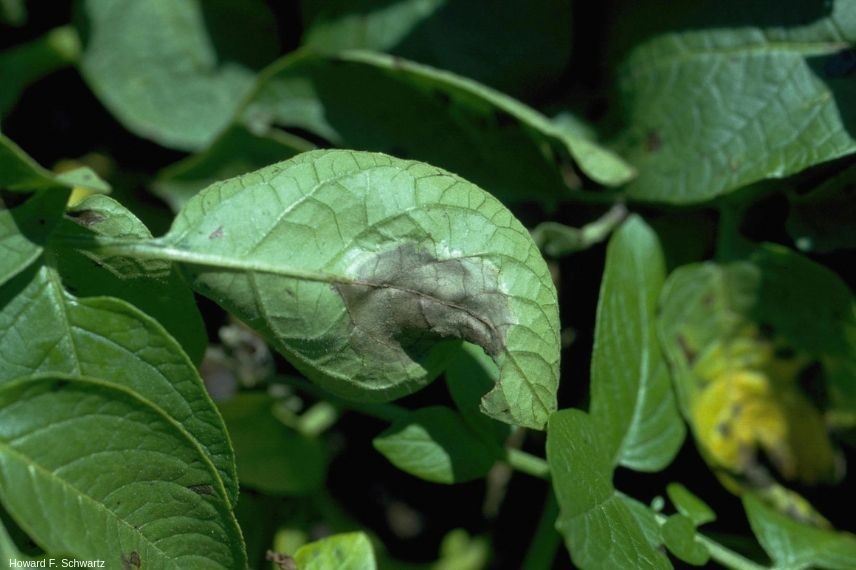
Phytophthora infestans, responsible for potato late blight
Phytophthora cactorum
Called cactus blight, it is feared by cactus collectors because it is very difficult to control and can also spread to fruit trees, Azaleas, Peonies…
Phytophthora fragariae
This Phytophthora is responsible for strawberry blight and its variety rubi for raspberry dieback.
Agents of bleeding canker of horse-chestnut, of brown rot affecting fruits of lower branches of citrus trees also belong to genus Phytophthora.
How to recognise a Phytophthora attack?
Genus Phytophthora belongs to the family Pythiaceae characterised by asexual reproduction producing conidia (borne in conidiophores) and sexual reproduction producing zoospores (oospores – spores resulting from an œuf – equipped with a flagellum allowing movement in a film of water). These microscopic pseudo-fungi do not produce visible fruiting bodies of true fungi such as honey fungus (Armillaria); they can persist in soil for several years as conidia or oospores and then infect roots when water is present thanks to motile germlings arising from both forms.
Phytophthora cinnamomi presents two types of symptoms :
- On roots and collar, a rot associated with cankerous lesions, often with reduction of root hairs. In conifers a transverse section of collar reveals a brown-maroon spongy rot.
- On shoots, foliage is discoloured, turns yellow, brown or red, curls (Rhododendron) then sometimes dries out very rapidly (leaves become brittle). In false-cypresses, Phytophthora causes progressive desiccation of whole tree and necrotic tissues can be observed at collar under bark and in roots.
Symptoms of Phytophthora ramorum depend greatly on host: on chestnut browning affects both trunk and leaves while on beech only trunk is affected. They also vary with temperature and humidity (slower in winter). Shrub species show only leaf discolouration while in larch needles yellow then redden individually within a plot or in foci. Trees decline overall (crown dieback, abnormal growth of new shoots) until they present blackish necrosis, cankers and resin flows.
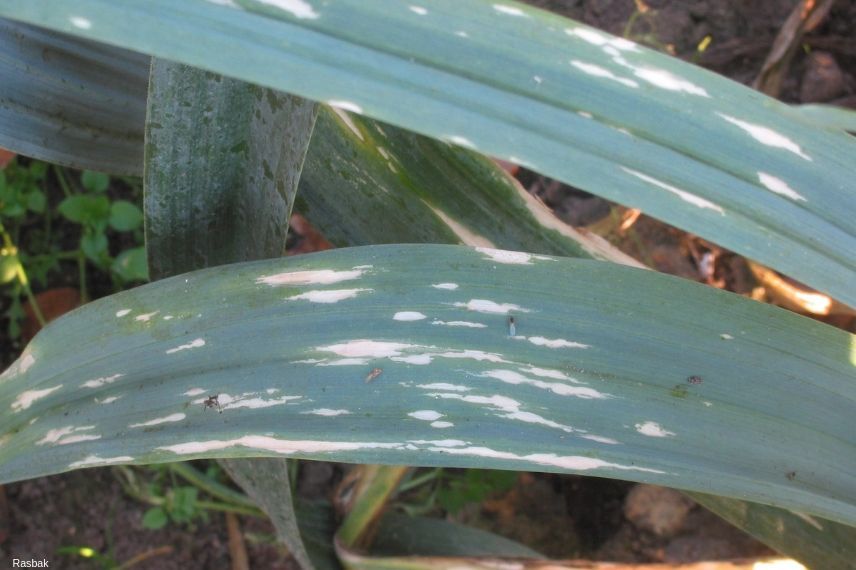
Phytophthora porri on a leek
On potato and tomato, in warm, humid conditions, blackish oily spots appear on tips and margins of leaves as well as on stems, accompanied by white mould on underside of the lamina. This leads to collapse of whole plant. On tomato, green fruits and stems brown then become dry and leathery. On potato, spores fallen onto soil also infect tubercles that display blackish, depressed areas, becoming dry over time and eventually rotting.
Phytophthora fragariae causes wilting of young leaves of strawberry plant in spring then symptoms spread to whole plant which browns while roots rot. On raspberries, its variety rubi develops during cool, very humid periods between 5 and 15 °C that asphyxiate roots and kill canes.
On cacti, whitish lesions are usually observed at base of young plants and of their roots, turning brown-black, then becoming soft. On mature specimens, soft tissues brown then dry out. If atmosphere is humid, rot sets in.
Factors favouring Phytophthora
- Phytophthoras are able to persist as spores for several years in moist or dry soils — up to 10 years for Phytophthora fragariae.
- Presence of water is essential for its spread.
- They can be transmitted via plant debris, potting media, infested young plants, contaminated water…
- Temperatures favourable to their development vary according to species (16–17 °C for P. cinnamomi).
- Presence of certain nematodes favours P. cinnamomi.
Certain cultural conditions should be avoided, such as:
- High planting density,
- Poorly drained, heavy or compacted soil,
- Excessive watering causing splashing,
- Excess nitrogen that weakens plants.
Read also
Verticillium wiltControl and treatment of Phytophthora
Improve cultivation methods
- Ensure planting in well-drained soil: add gravel, pumice, organic matter to improve circulation of water and air or plant on raised beds.
- Space young plants sufficiently to avoid contact between foliage and create a healthy atmosphere.
- Mulch the soil to separate soil from foliage, especially in the vegetable patch (earthing up potatoes or mulch generously).
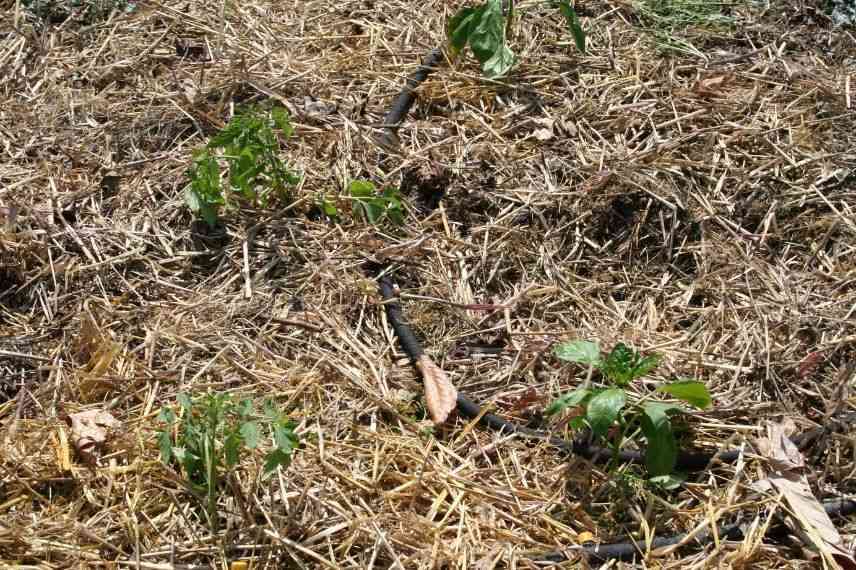
- Avoid damaging the collar of trees with mowing equipment, for example.
- Plant varieties resistant to late blight in strawberry, tomato (Ferline F1, Pyros F1, ‘Maestria’, ‘Luxor F1’, ‘Fandango’ F1), lettuce and potato (‘Bintje’ and ‘Sirtema’ are very susceptible).
- Remove infected potato tubercles as much as possible, bearing in mind that spores also survive in the soil over winter.
- Carry out long rotations: wait at least 5 years before replanting raspberry plants in the same location, 4 to 10 years for strawberry plants.
Control and treatment of Phytophthora
- Against root Phytophthora (decline of conifers), it is recommended to uproot and burn affected young plants. Replace soil to a significant depth and avoid replanting the same species. Professionals may irrigate the soil with fosetyl-Al (Aliette) to inhibit development of the fungus in the soil.
- In the vegetable patch, regular inspection of foliage is recommended during wet periods to act quickly, because if nothing is done, herbaceous plants soon die.
- Remove spotted leaves promptly and spray aerial parts with one of the following:
- lecithin at a rate of 15 g in 10 l on the foliage every 7 days,
- Bordeaux mixture (as soon as potato leaves appear),
- horsetail decoction (2.25 g/l) in warm, humid conditions on tomato and potato every 5 to 14 days,
- sage infusion (80 g fresh leaves or 50 g dried leaves in 1 litre of boiled water),
- essential oil (rosemary cineole, tea tree, mountain savoury, clove or clary sage) at 20 drops in 5 litres of water plus 10 ml olive oil + 10 ml black soap.
- Subscribe!
- Contents
































Comments